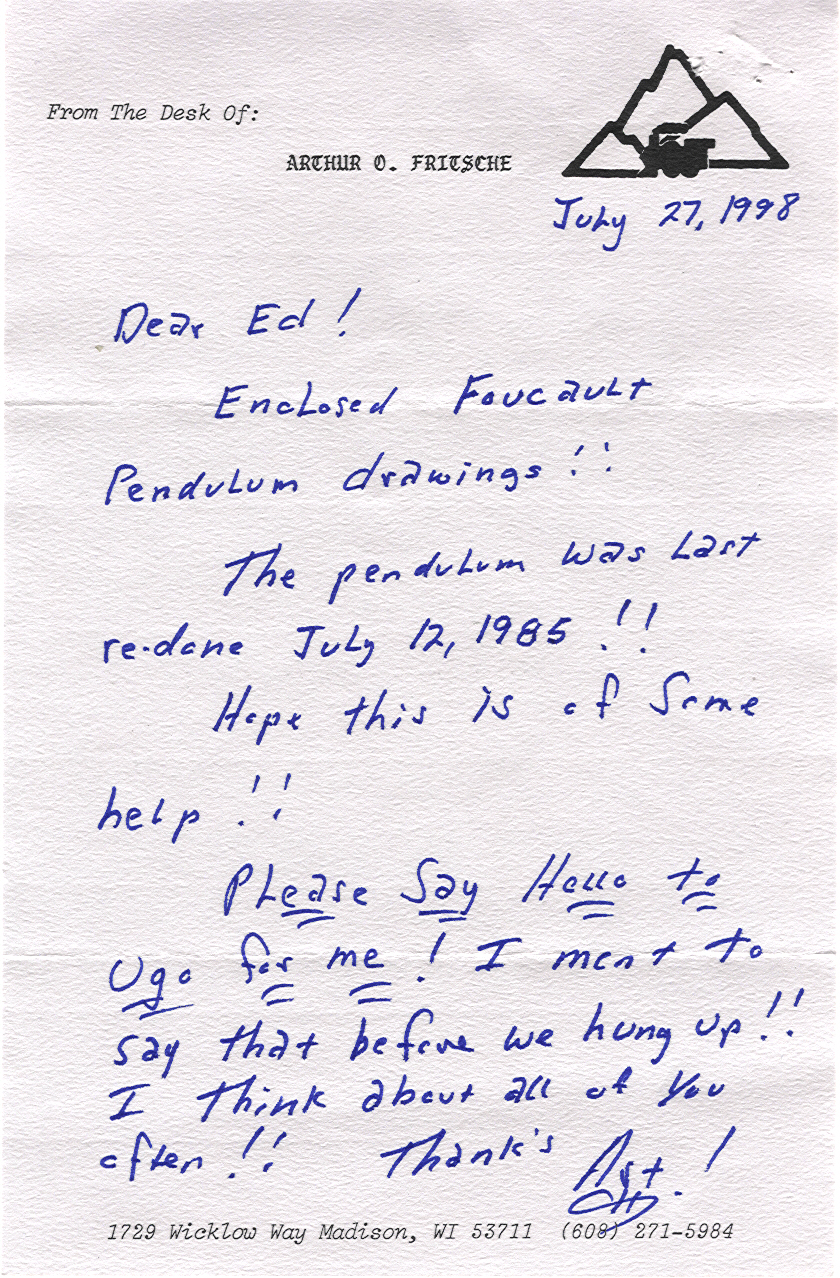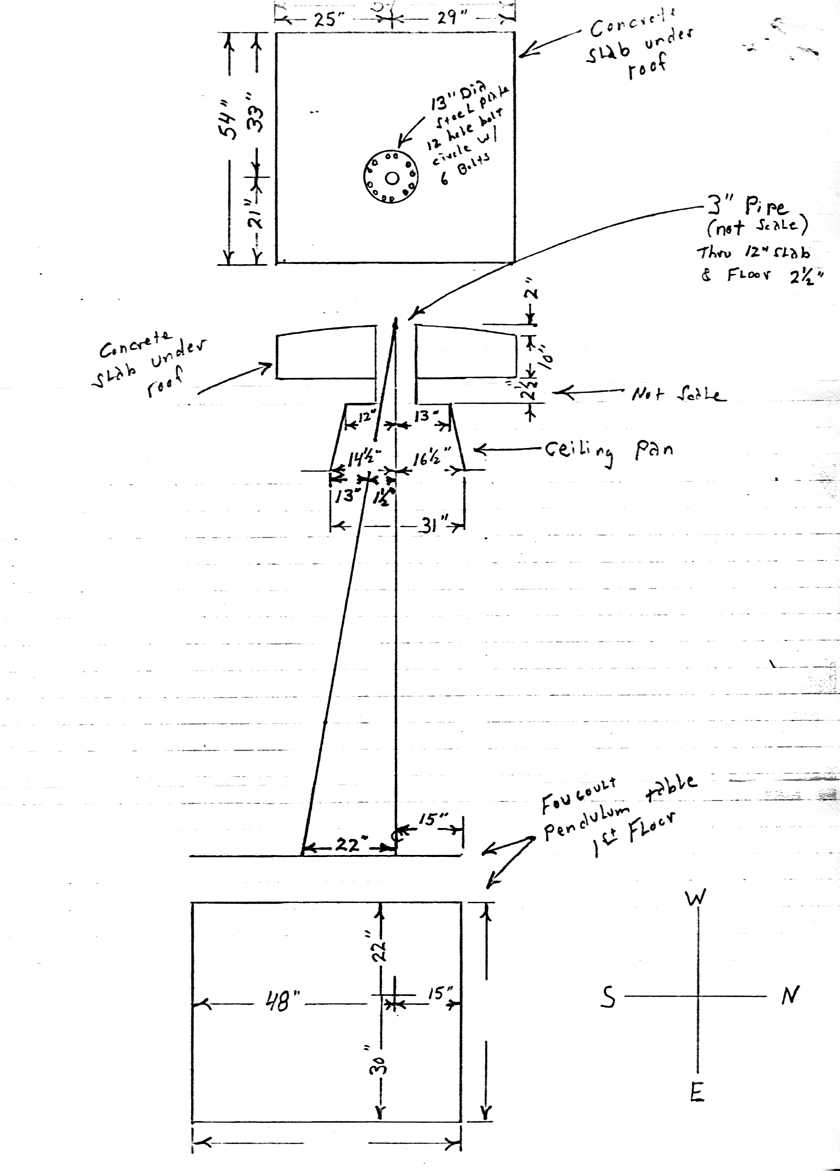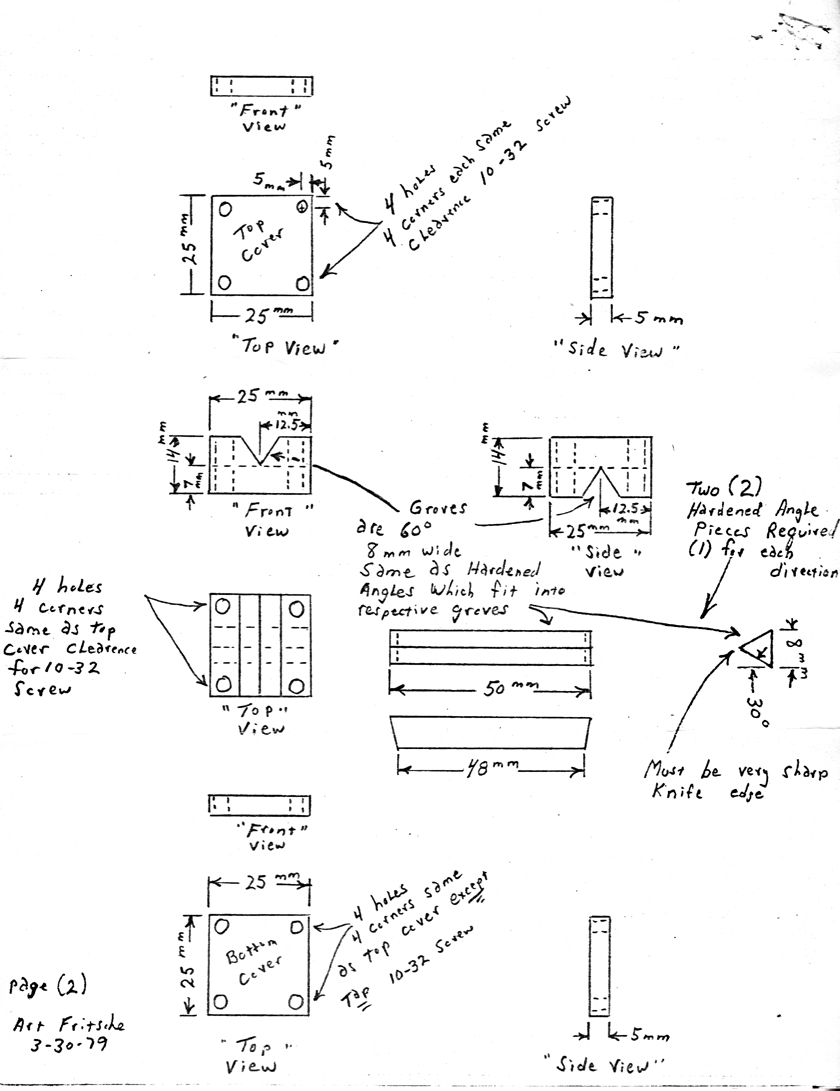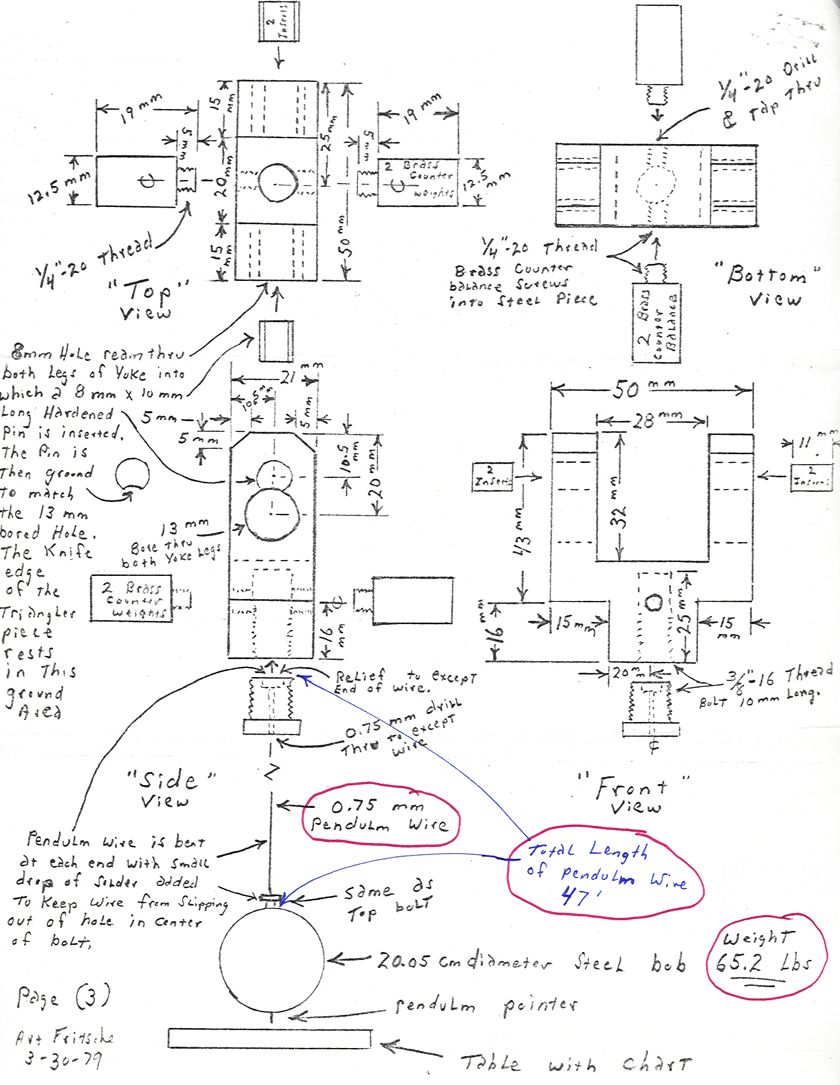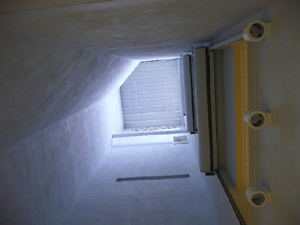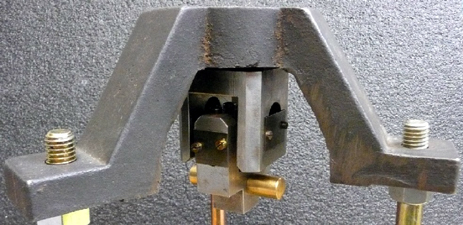Foucault Pendulum, 1E20.10
Location:
Was in the lobby of Sterling Hall now in storage
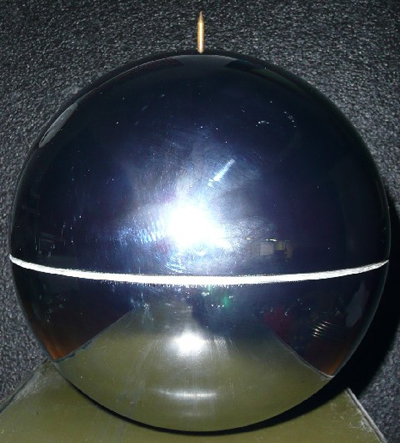
Description:
Sorry to say, but the pendulum was removed from Sterling Hall after physics movie into Chamberlin Hall. Planning were stated to have the pendulum hung within the light-well off the main lobby area in Chamberlin. These plans are now on hold, due to funding. Details of our Pendulum and the relocation are located at the following url. WU Foucault Pendulum The estimate cost from 2007 was nearly $50K to have it reinstalled. This would include the installation of a metal structure and catwalk at the top of the light well where we could hang our pendulum from.
Information as to how you can make a donation to this cause can be found at; Donations
Demonstration:
- If a pendulum is suspended so that it may swing freely, it will maintain a constant plane of oscillation, relative to an inertial frame of reference. This is the result of the force which act on a pendulum. These forces act in the direction of the path of the pendulum and along the string. There is no force acting perpendicularly to the path of the pendulum. If a pendulum were suspended at the north pole of the earth, it would continue to oscillate, unperturbed, in it's original plane of motion, while the earth revolved beneath it, making one revolution in twenty-four hours. To an observer on the earth at the north pole, who is unconscious of the earth's rotation, it will appear the the pendulum's plane of motion is constantly changing, completing 360 degrees of rotation in twenty-four hours. This horizontal rotation will appear to be in the opposite direction of the earth's rotation, that is, in the clockwise direction. At the equator, no such rotation takes place. At a point between the pole and the equator, the period of this rotation varies between twenty-four hours and infinity, depending on the latitude. In Madison the period is 35 hours, 8 minutes, 8 seconds. In 1852, Leon Foucault suspended a pendulum from the dome of the Pantheon in Paris. This pendulum, now known as the Foucault Pendulum, showed the apparent rotation of a pendulum's plane of oscillation.
|
|
|
References:
History of How Our Pendulum Was Made
